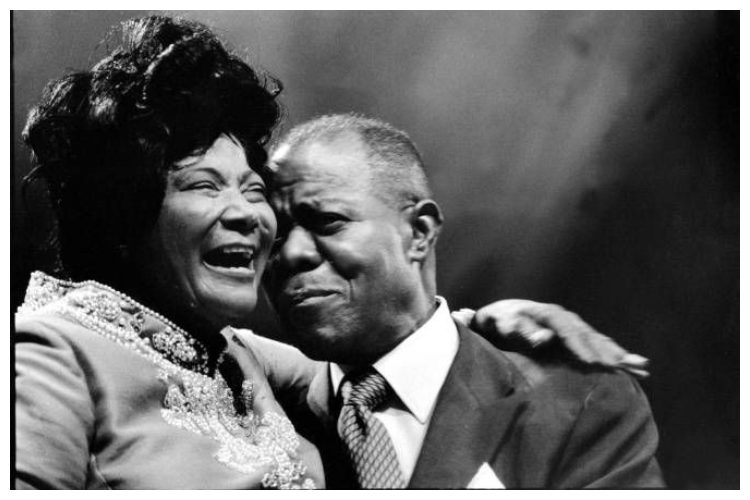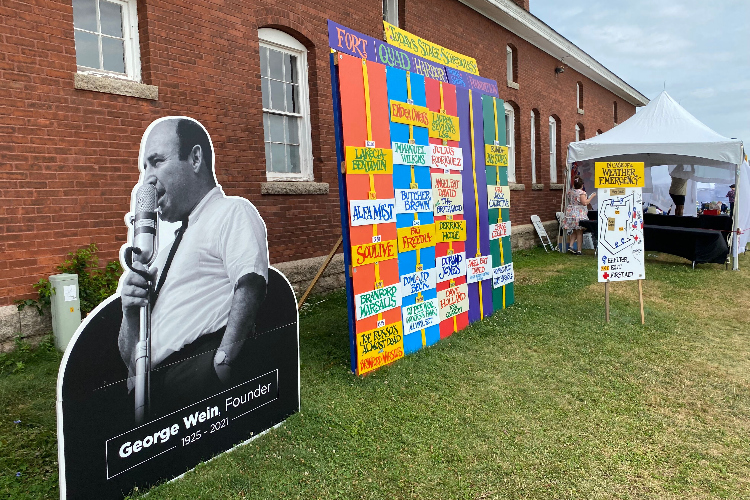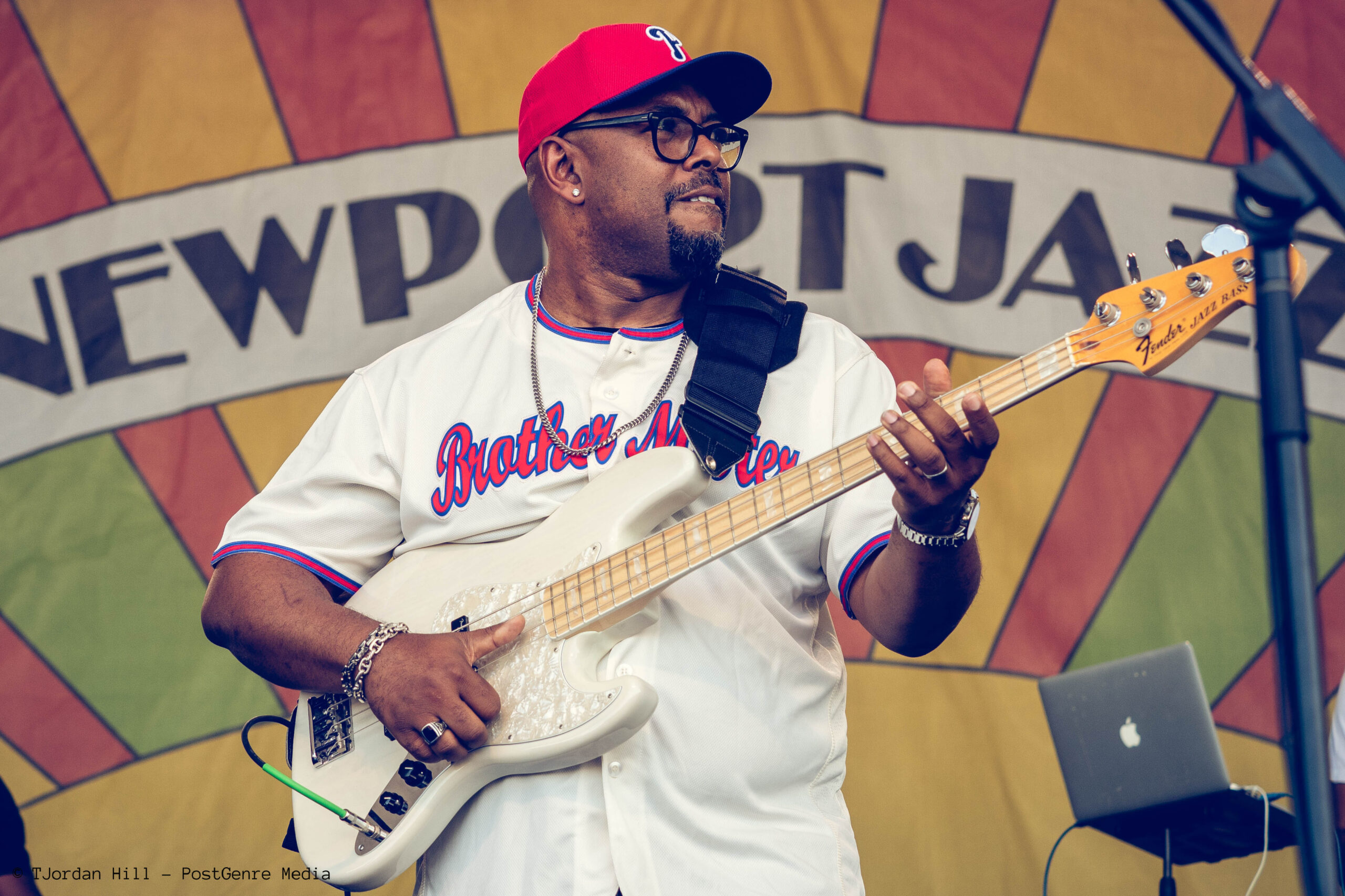A History of the Newport Jazz Festival – Chapter VII: Memory of a Giant, 1970-1971
|
Getting your Trinity Audio player ready...
|
In some ways, the near riotous circumstances at Festival Field in July of 1969 was a precursor of an event which would occur the following month on farmland in Bethel, New York. Woodstock featured a few artists who were in Newport the month prior – Sly and the Family Stone, Ten Years After, and Blood, Sweat & Tears. Event organizers also invited the Jeff Beck Group, but it had disbanded right before the event. As were Led Zeppelin, The Mothers of Invention, and Jethro Tull though each declined. The temporary movement of over 300,000 to a small agricultural community shocked local governmental leaders and produced numerous restrictions on concerts intended to maintain order.
These changes did not mean the end of Festival Production Inc.’s planning of concerts and festivals. With the overall success of the Newport Festivals, the company had continued to expand its footprint. The preceding years brought the Hampton (Virginia) Jazz Festival, Rutgers Jazz Festival, and Ohio Valley Jazz Festival. In 1970, this expanded to encompass the New Orleans Jazz and Heritage Festival.
In 1962, Olaf Lambert, manager of the city’s Royal Orleans Hotel, called Wein to request that he produce a festival in the Big Easy. Although the producer had never visited the city to that point, he expressed his interest. Upon further reflection, he decided that the then-existing Jim Crow laws made such an event an impossibility. Many of the bands he would produce contained artists of different races. Wein wanted the audiences diverse and united as well. At the time, the city was inhospitable to such inclusion; even Wein’s wife Joyce was unable to join him on a trip there due to complications related to the fact she was African-American, and he was not. After the passage of the Civil Rights Act, efforts were renewed for Wein to host his Festival. However, the city was still not socially ready for the inclusion it required. It was canceled again. By 1970, New Orleans had changed enough to make the event a reality. It would not exactly follow the Newport model. Instead, it was to be more reflective of its new home and the various cultural influences therein, including a broader range of musical styles. Although it has increasingly incorporated more popular artists since that April, its essence has remained.
Back in Newport, the city council had not only prohibited rock acts from performing at future festivals but also imposed a series of fines and restrictions on Festival Productions Inc. before it could host the 1970 Jazz Festival. Across the weekend, the event included Ike and Tina Turner, Roberta Flack, Nina Simone, Jean-Luc Ponty, Dizzy Gillespie, bluesman Albert King, Kenny Burrell, Chico Hamilton, Leon Thomas, and Ella Fitzgerald with the Tommy Flannigan Trio. There were three workshops. One centered on the violin with Ponty, Mike White, and Ray Nance. Another on drums with Hamilton, Elvin Jones, Philly Joe Jones, and Jo Jones. And the last on trumpets with Gillespie, Joe Newman, and Jimmy Owens. Tenor titan Dexter Gordon flew in from France while talented altoist Sadao Watanabe, who once played with John Coltrane, came from Japan. Gary Burton’s Quartet augmented with Keith Jarrett promoted their recent Atlantic release. Eddie Harris showcased his prowess on the varitone electric sax in what later became Live at Newport (Atlantic, 1970).
But the Festival truly belonged to Pops.
Louis Armstrong had previously appeared at Newport eight times: 1955, 1956, 1957, 1958, 1959, 1960, 1962, and 1964. But the ninth was different. After heart and kidney illnesses sent him to intensive care twice in the Fall of 1968, doctors instructed the trumpeter to stop performing. For 1969, he mostly complied with this request, but he just could not bear to stay away from music and entertaining audiences. He re-emerged the next year. With the public increasingly aware that the legend was now in the twilight of his life, many began sharing tributes to the lasting influence he had held on them. On Friday, July 10th, Wein and his team created the greatest of these by throwing a 70th birthday bash utilizing many artists from the city now housing their newest event. French Quarter restaurateur Buster Holmes was even on hand with red beans and rice for the crowd.
The special evening started with the Eureka Brass Band. One of the most well-known groups of its kind, it was founded around 1920 by Willie Wilson and a fixture in New Orleans for many years, particularly at parades, funerals, and parties. Now led by Percy Humphrey, the ensemble- John Handy on sax, Punch Miller and Lionel Ferbos on trumpet, Orjan (Orange) Kellin on clarinet, Jim Robinson and Paul Crawford on Trombone, Allan Jaffe on Tuba, Billie Pierce on piano, Booker T. Glass on bass drum, and Cie Frazier on snare drum- marched along the grounds under the direction of clarinetist Willie Humphrey. Along the way, they played through rousing versions of “Lord, Lord, Lord” and WC Handy’s “St. Louis Blues.” Much of the group also reappeared with the New Orleans Classic Ragtime Band where, with Swedish pianist Lars Edergran, they visited some of their home city’s finest traditional tunes.
Bobby Hackett, originally from nearby Providence, followed with his Quintet. Satchmo considered the bandleader one of his favorite musicians. He, in turn, idolized Armstrong. Lasting only three songs- including “Heebie Jeebies,” one made popular by the man of honor 44 years prior – the performance with trombonist Benny Morton, pianist Dave McKenna, bassist Jack Lesberg and drummer Oliver Jackson provided a sneak preview of what was to come.
Trumpet Players Tribute was a set honoring Armstrong’s role as one of the greatest to ever play the instrument and featuring some of the most significant compositions during his career. Hackett revisited 1936’s “Thanks a Million.” Joe Newman, best known for his time with the Count Basie Orchestra, provided his version of “Way Down Yonder in New Orleans,” a piece Satchmo recorded with Bing Crosby in 1960. Wild Bill Davison, who sixteen years before appeared at the first Newport Jazz Festival with Eddie Condon, started with a statement: “If I told you what I really thought about Louis Armstrong, you’d probably call it indecent exposure.” He then shared “Them There Eyes,” which the artist of honor first recorded back in 1931. The youngest performer of the set, twenty-seven-year-old Jimmy Owens provided modern interpretations of 1956’s “Mack the Knife” and “Nobody Knows the Trouble I’ve Seen.” The Duke Ellington Orchestra’s Ray Nance sang and played 1930’s “I’m In the Market For You.” Whereas Davison relied on humor, Dizzy Gillespie’s take on 1930’s “Confessin’” began with a heartfelt message. “Louis Armstrong’s station in the history of jazz is unimpeachable. If it weren’t for him, there wouldn’t be any of us. I want to take this moment to thank Louis Armstrong for my livelihood.” At the end, The army of horn players joined in unison for Pops’ theme “When It’s Sleepy Time Down South” to which he walked out unannounced. The audience went wild.
After an intermission, Jaffe’s own Preservation Hall Jazz Band, though itself not formed until 1963, returned to the more traditional sounds of New Orleans.
Mahalia Jackson took the microphone in her first Newport appearance since her midnight show in 1958. Like Armstrong, her health was failing her. But she nevertheless exuded elegance and grace in her performance of hymns like “How Great Thou Art” and “Let There Be Peace.” She introduced Armstrong by stating that “if you don’t love him [you don’t] really know how to love” before beginning “A Closer Walk With Thee” as he was invited on stage. Even in his weakened state and inability to play the trumpet, he could not stop charming the audience and singing a few of their favorite songs.
Where the planned birthday celebration of 1957 met a rough patch, 1970’s could not have been more successful. The legendary artist called it one of the greatest thrills of his life. Even thirty years later, George Wein – who had the foresight of videotaping the proceedings – viewed the evening as the Newport Jazz Festival’s finest moment.
Unfortunately, the 1971 Newport Jazz Festival, on the other end, provided some of the darkest memories. Although a little more expansive than the prior year, that summer’s lineup was a far cry from the rock that inundated the 1969 Festival. That is not to say it completely ignored the growing trend towards fusion. The afternoon of Monday, July 5th, was to feature three acts with this sound. Miles Davis would present the sextet showcased on Live-Evil (Columbia, 1971): Gary Bartz, Keith Jarrett, Michael Henderson, Jack DeJohnette, and Airto Moreira. The team of Wayne Shorter and Joe Zawinul, who once collaborated in Maynard Ferguson’s Orchestra, would show audiences the early formation of what would become one of the greatest bands of the era: Weather Report. English band Soft Machine would merge jazz with progressive rock and electronic music as shown on their epic released a month later, Third (Columbia, 1970).
None of it would come to pass.
When the city of Newport prohibited rock performances, many small cities and towns across the country did as well, primarily in response to Woodstock. But this did not ban other styles of music. As part of Sunday’s blues-focused show, Wein had booked James Cotton, Big Joe Turner, saxophonist Eddie “Cleanhead” Vinson, B.B. King, T-Bone Walker, and a little known band from Jacksonville, Florida. In between their selection and the Festival weekend, the Allman Brothers had skyrocketed in popularity. This was particularly true with young fans of rock concerts also drawn to the scheduled sets the day before by Dionne Warwick and now star Aretha Franklin.
In response, uninvited hordes flocked to Newport. Many popped up tents on the same slope nearby Festival Field through which problems first emerged in 1965 and 1969. Some even came as early as the day before the first night of performances. By Friday, there were thousands on the mound, many partaking in drugs and alcohol.
The first day, July 2nd, proceeded mostly undisturbed by the new visitors. Buddy Rich, Duke Ellington, Roberta Flack, and Stan Kenton each provided their own contributions. However, there was cause for concern as a few of the ne’er do wells announced their intention to storm the stage the following night.
By Saturday afternoon, the hillside crowd was ten thousand in strength. Despite the chaos, beautiful music continued. Freddie Hubbard presented his Quintet a year after his masterwork Red Clay (CTI, 1970). Willie “The Lion” Smith showed the brilliance of stride piano and Eubie Blake that of ragtime. Former rebels Charles Mingus and Ornette Coleman were on hand as well. The latter would record Science Fiction (Columbia, 1972) that fall. Spike Lee’s father Bill Lee led the New York Bass Violin Choir.
Meanwhile, outside of the gates, many uninvited visitors began experiencing drug overdoses. That evening, a few hecklers surrounded the main Festival entryway chanting “Liberate the main gate!” that “Music should be free!” and otherwise harassed ticket purchasers. As Bill Chase and his band opened the night’s festivities with their hit single “Get it On,” the unruly youths began surrounding different segments of the eight-foot-high chain-link fence dividing the concert venue from their encampment. Some climbed over it and into the field. When asked if they were concerned they would destroy the Festival, a response back was “Fuck the festival!” The next group, Dave Brubeck’s Trio featuring Gerry Mulligan proceeded unabated even as surroundings turned incrementally more hostile. The moment is now Last Set at Newport (Columbia, 1971) featuring the classic “Blues for Newport.”
By the time Dionne Warwick began her explorations of the Burt Bacharach songbook. By the time she reached “What the World Needs Now is Love,” the great fence surrounding the venue began to collapse as the mob rushed to the stage. Despite pleas from Festival management, police, and artists, the crazed swarm continued, smashing and burning everything in sight along their way. Estimated Property damage ranged between $20,000 and $30,000. The city hospital reported 300 people treated for injuries in the emergency room. Only nine of the rioters were arrested.
As Wein would note to reporters at the time:
“These are the same kids who invaded the festival in 1969. Only they’re two years … more into [being] walking zombies. They were freaked out on acid. There were hundreds involved in the violence, supported by thousands. Their purpose in being here was to get stoned and raise hell. They had no concern for jazz, no concern for the festival. They are America’s disgrace.”
Sadly, that disgrace also meant no more Newport Jazz Festival. Unlike in 1960, where Wein would take a year-long hiatus, this was the end. Three days later, one of the greatest artists to ever live, Louis Armstrong, was gone as well.
Louis Armstrong’s versions of “Blueberry Hill” and “Pennies from Heaven” from his final performance at Newport can be heard on-demand as part of WBGO and Christian McBride’s Jazz Night in America.
Significant portions of this chapter were adapted from George Wein’s autobiography (written with Nate Chinen) ‘Myself Among Others’ (Da Capo Press, 2004), and ‘50: The Newport Jazz Festival, 1954-2004’.



